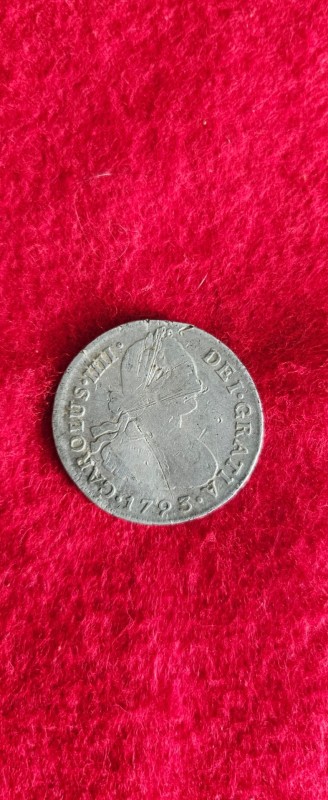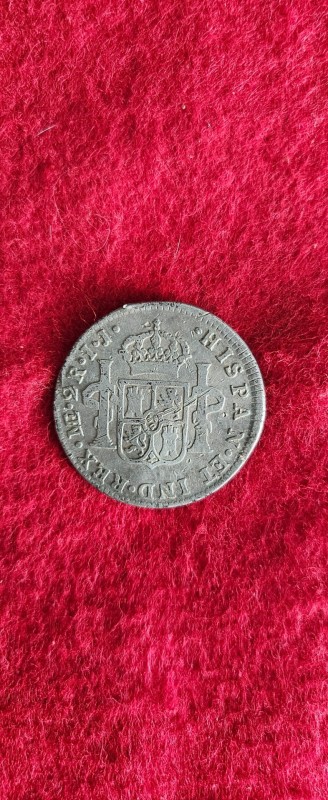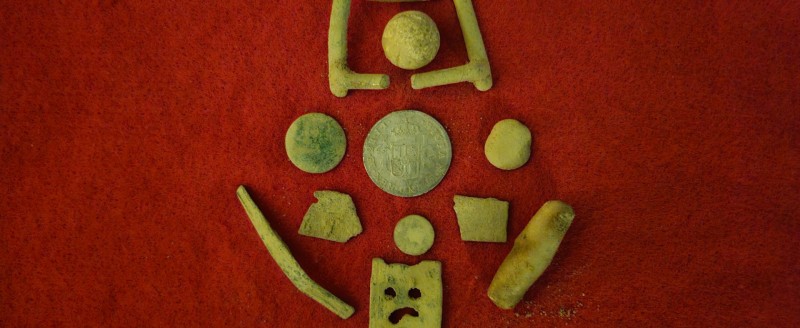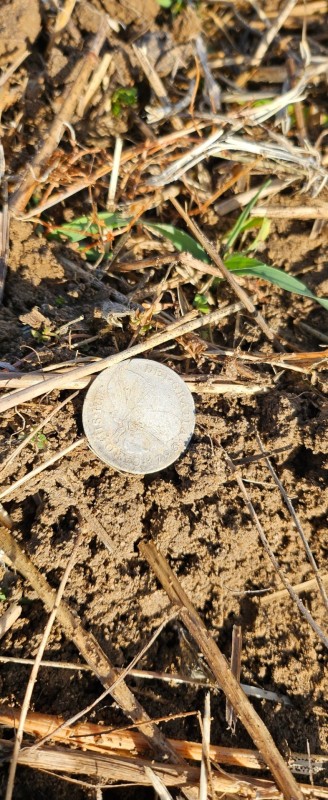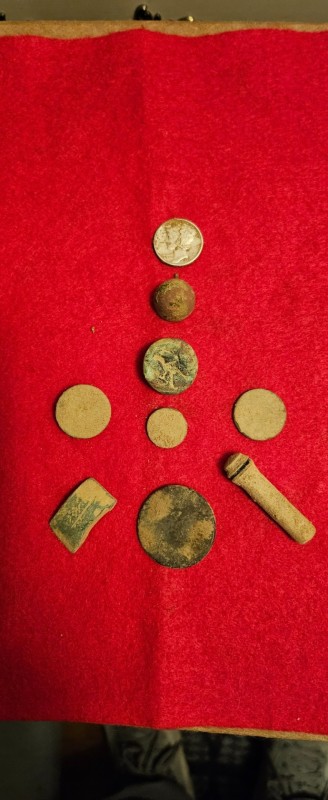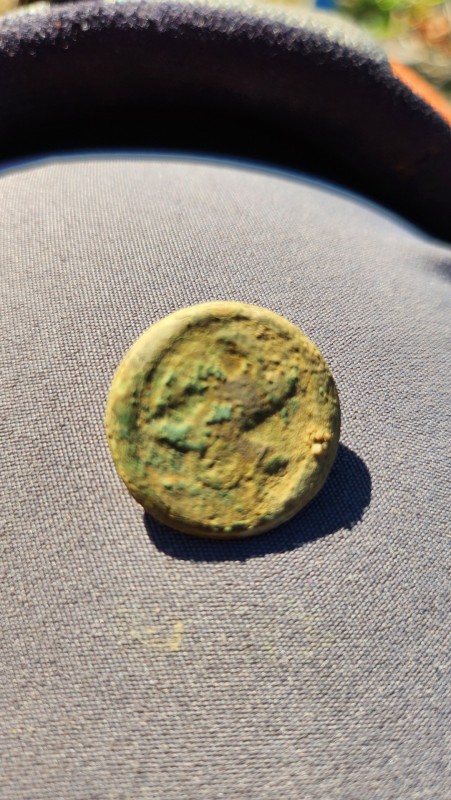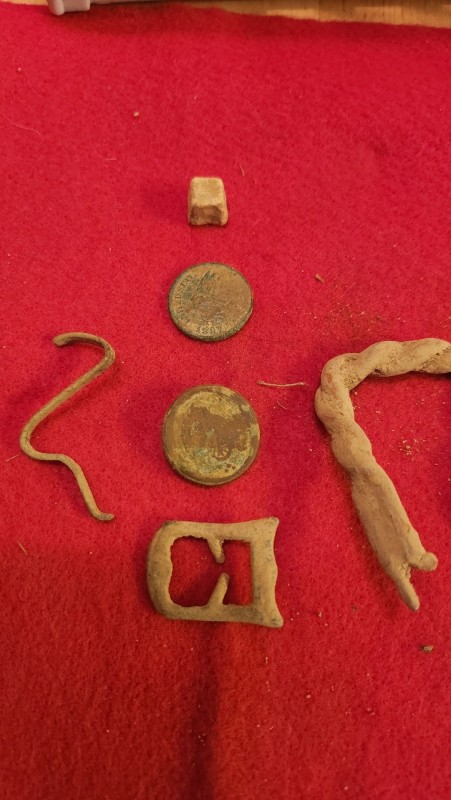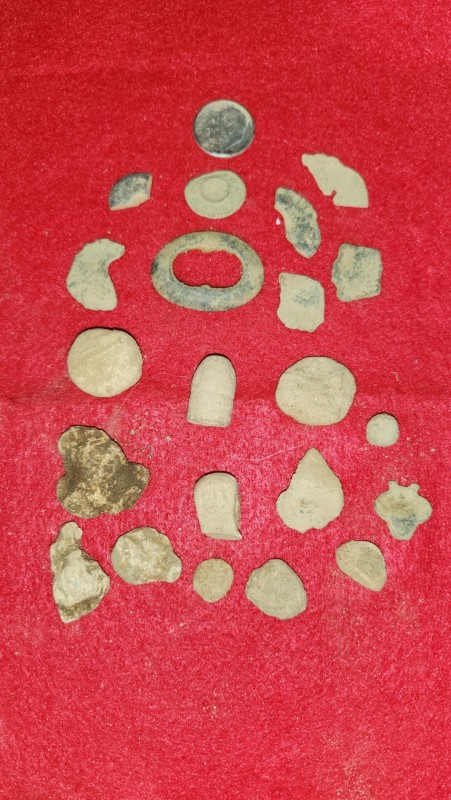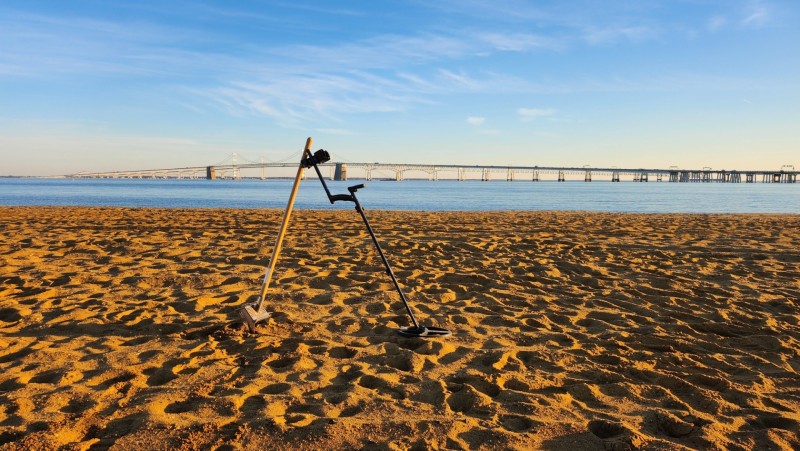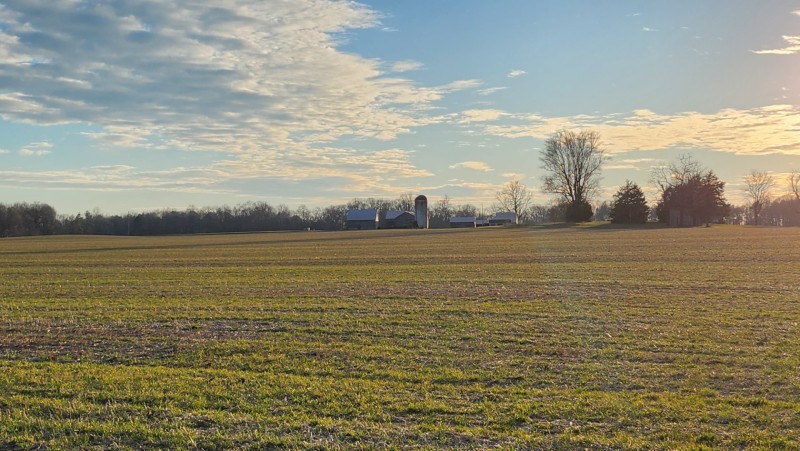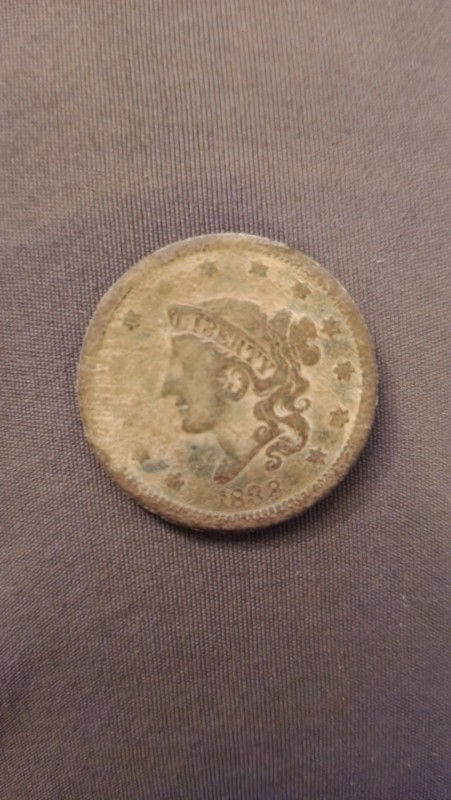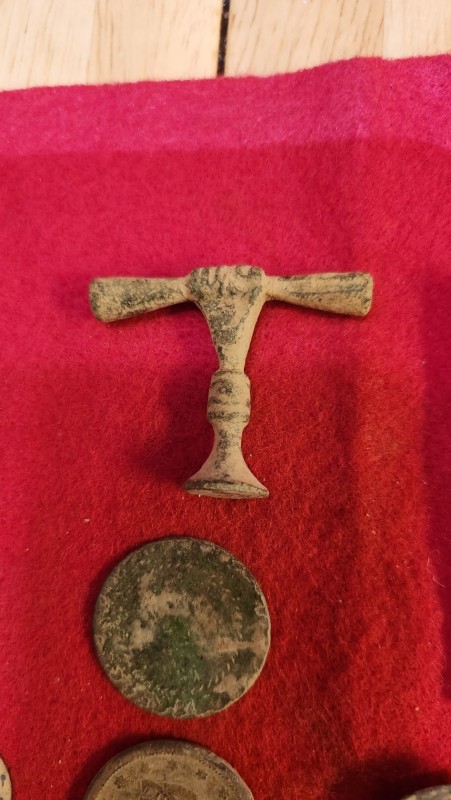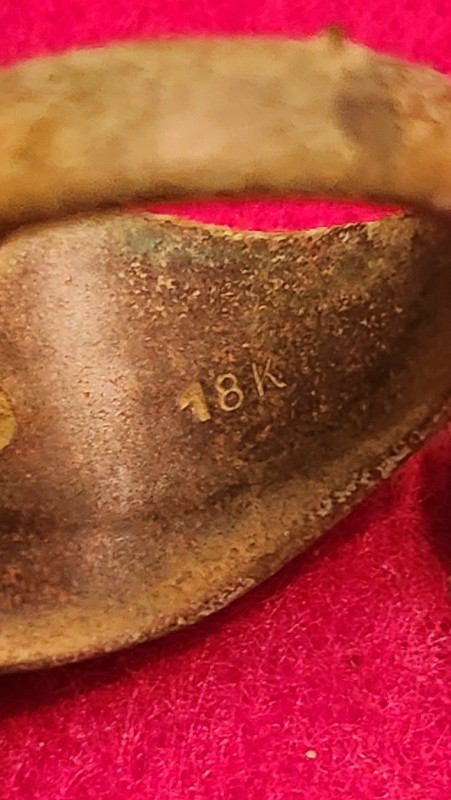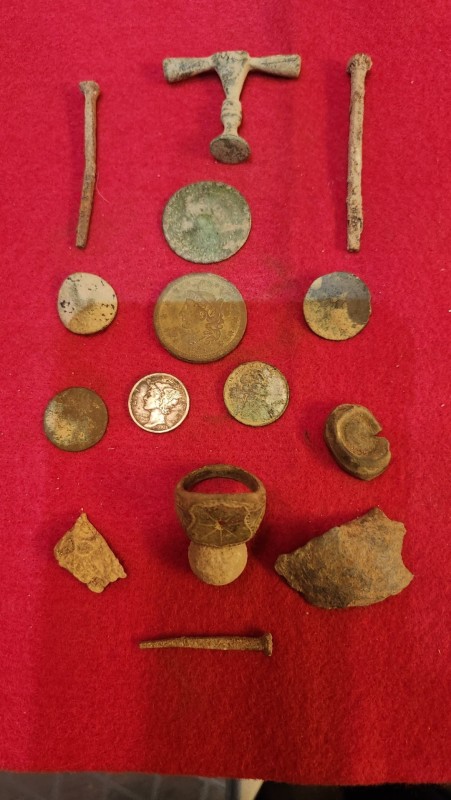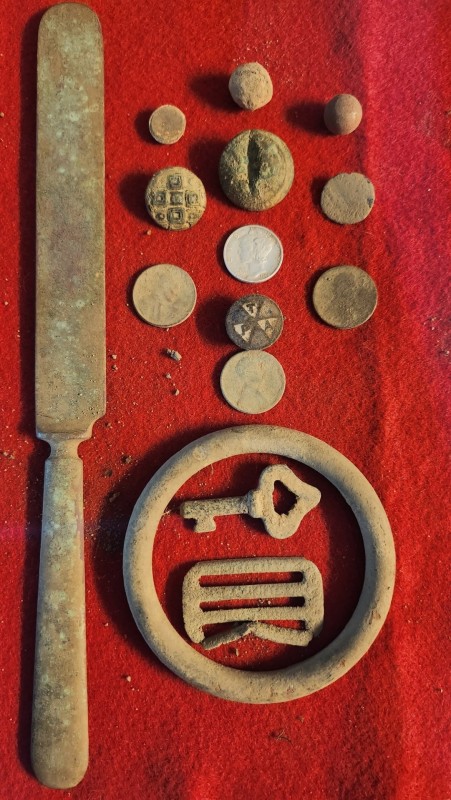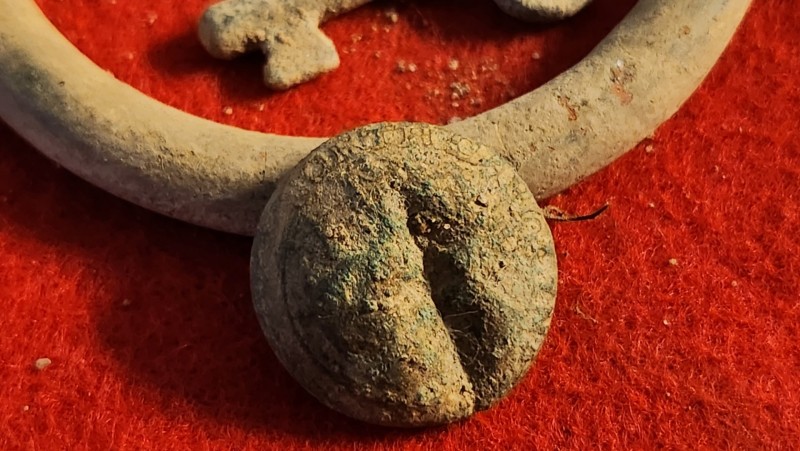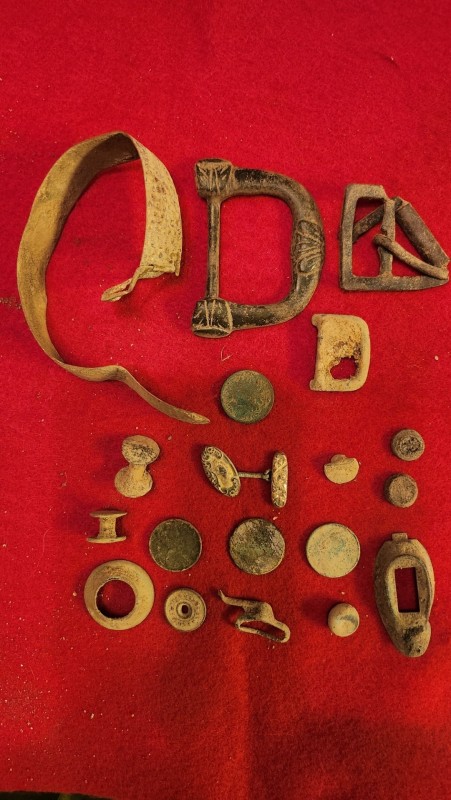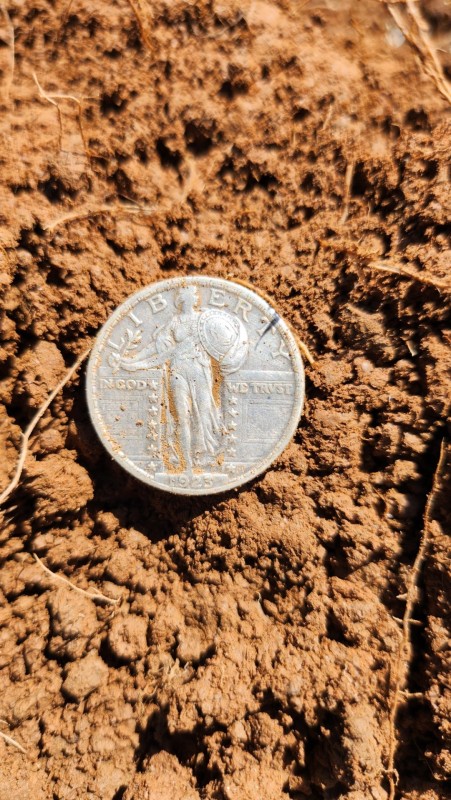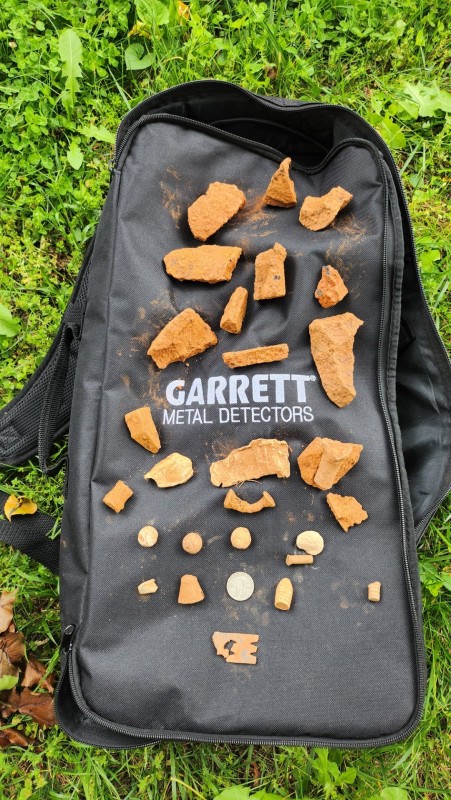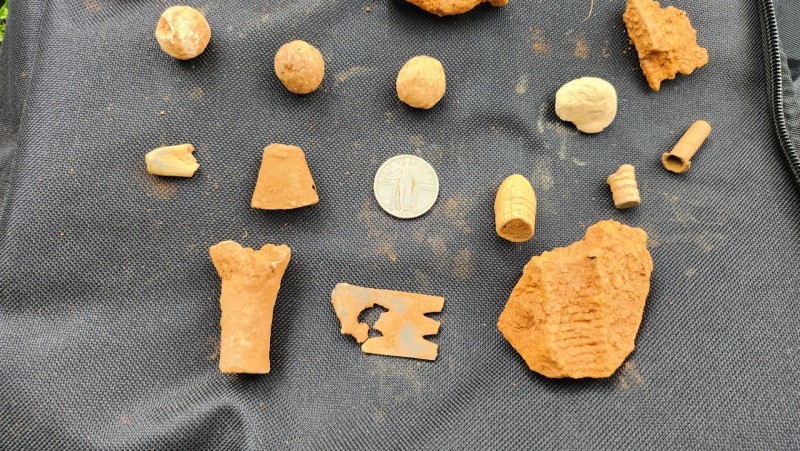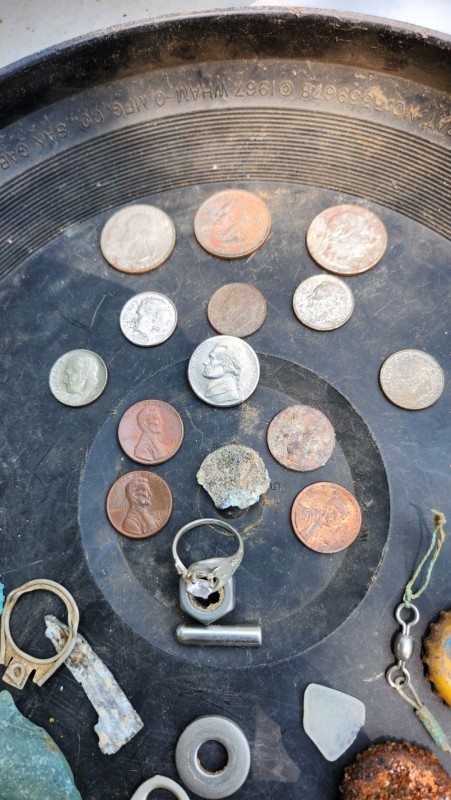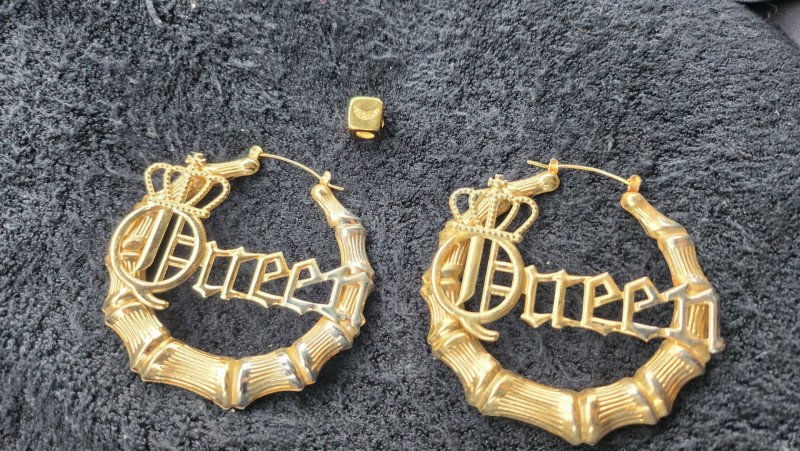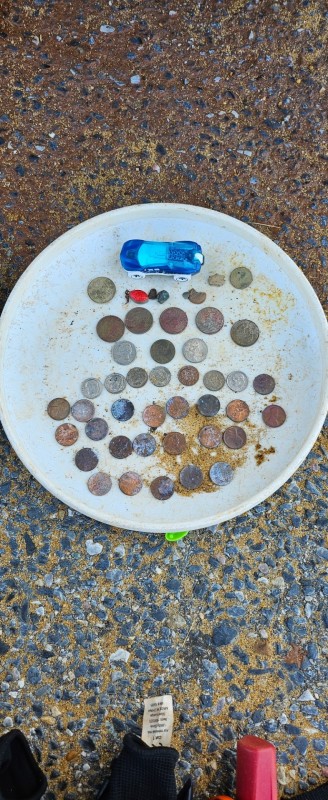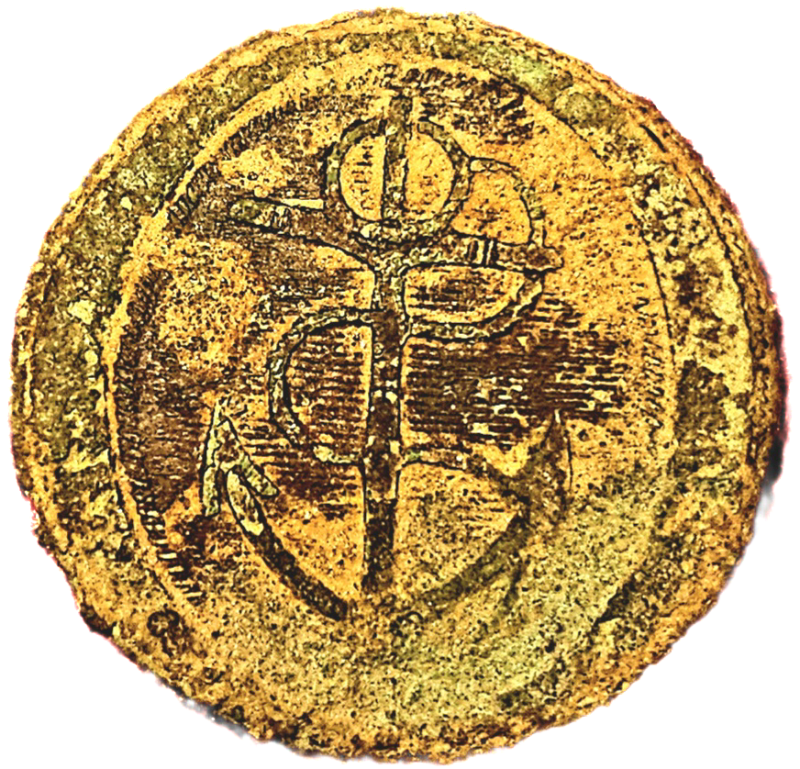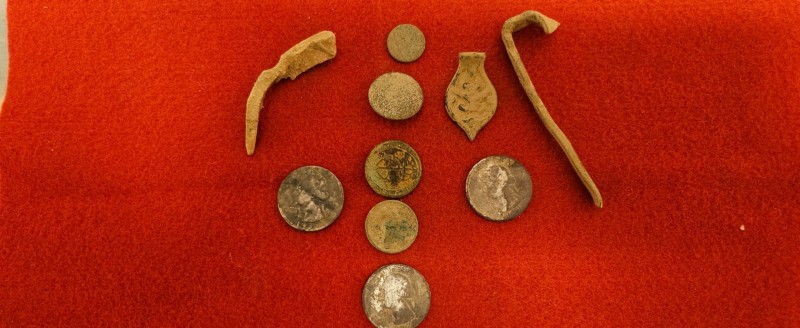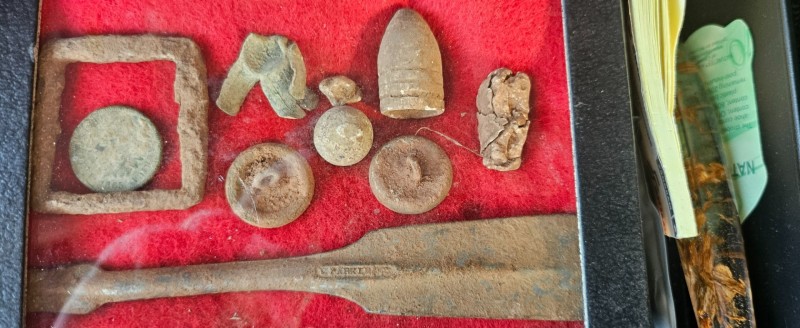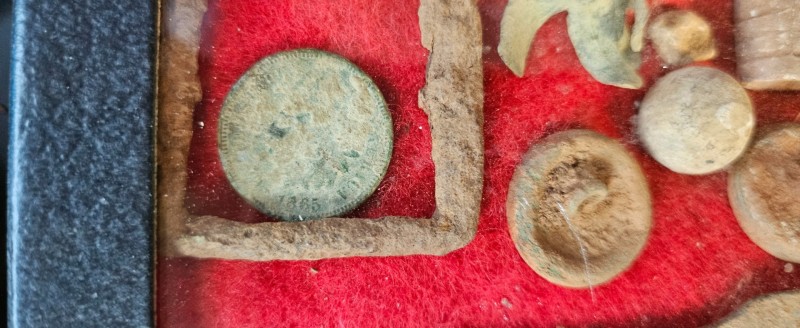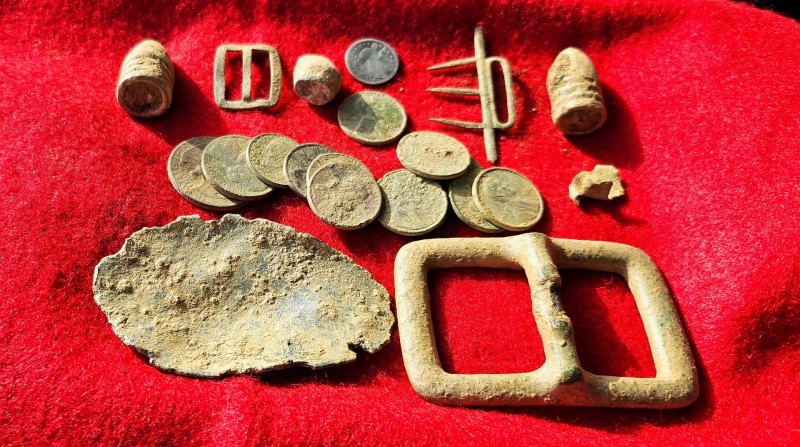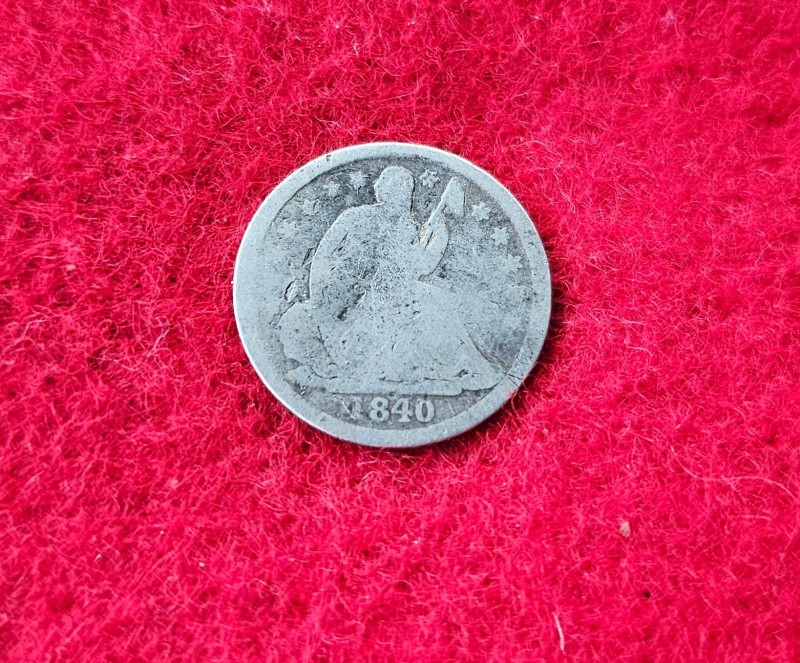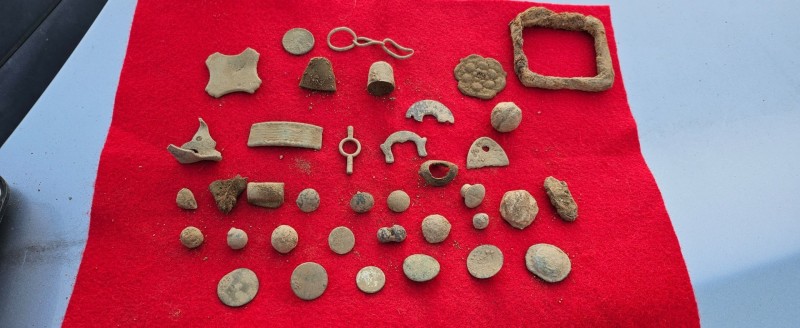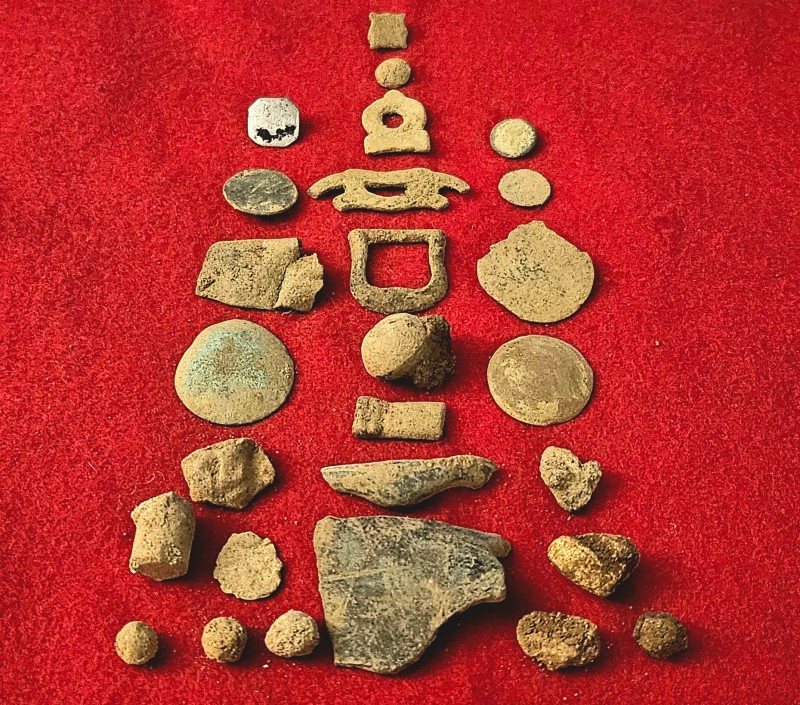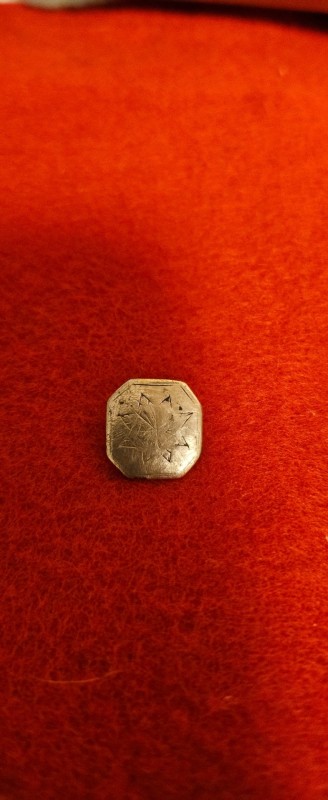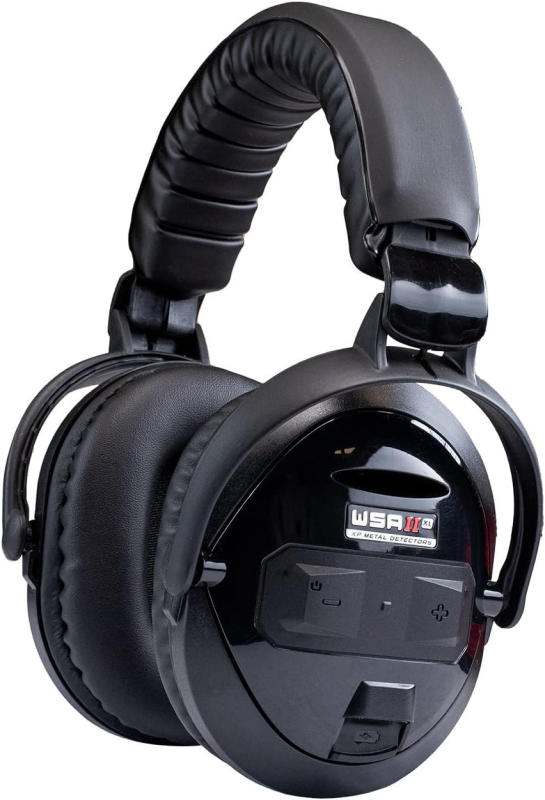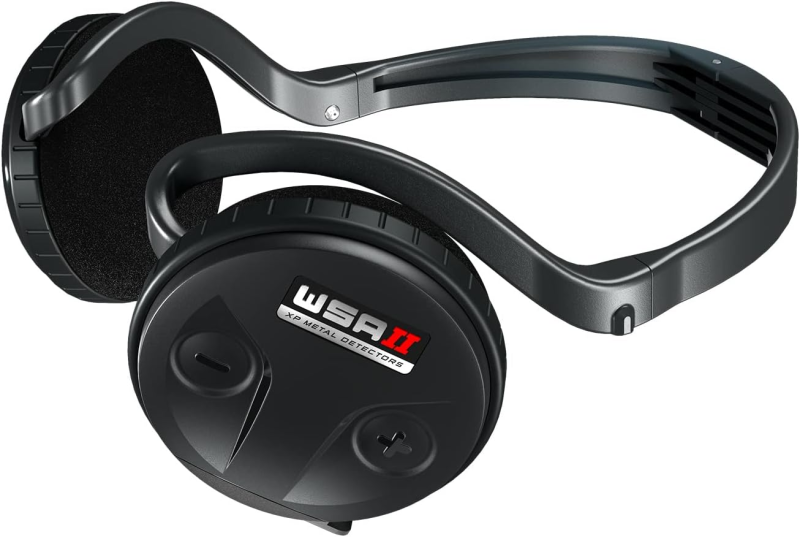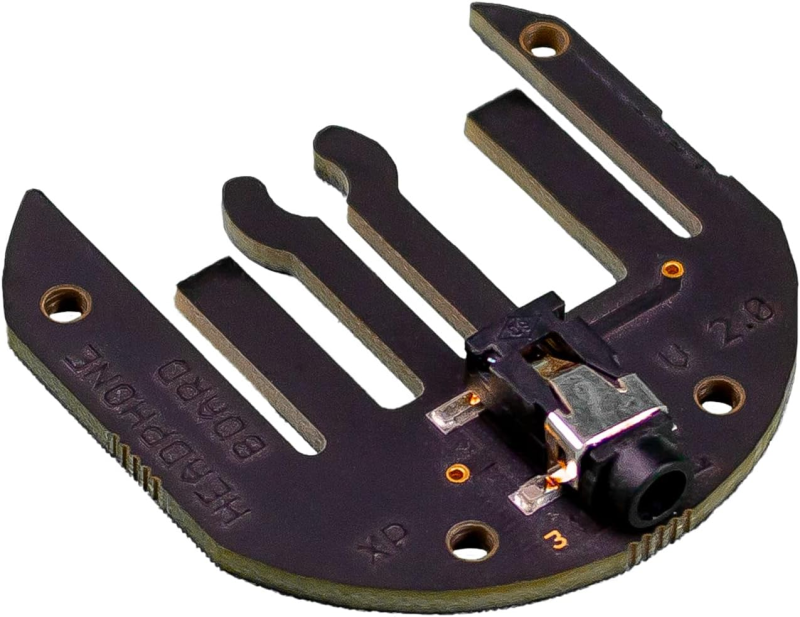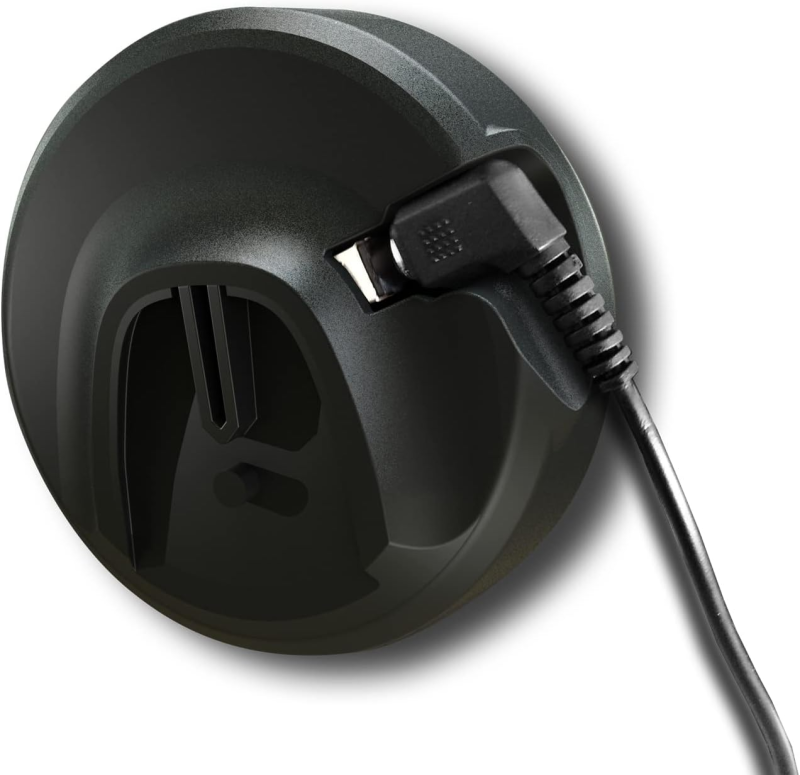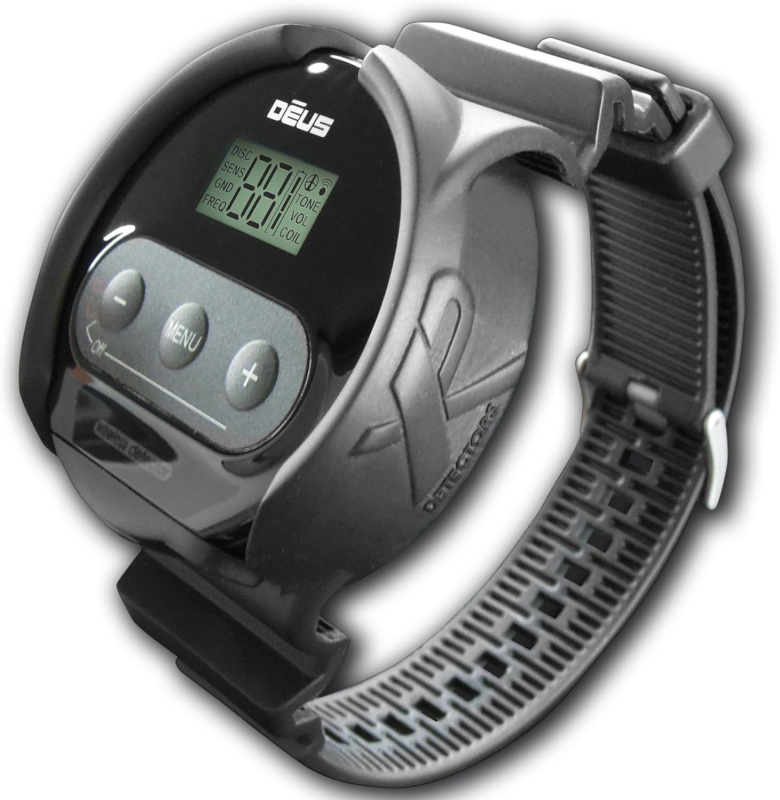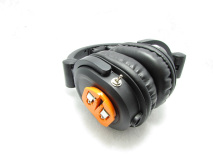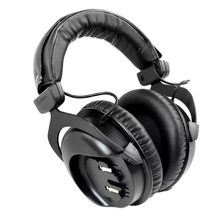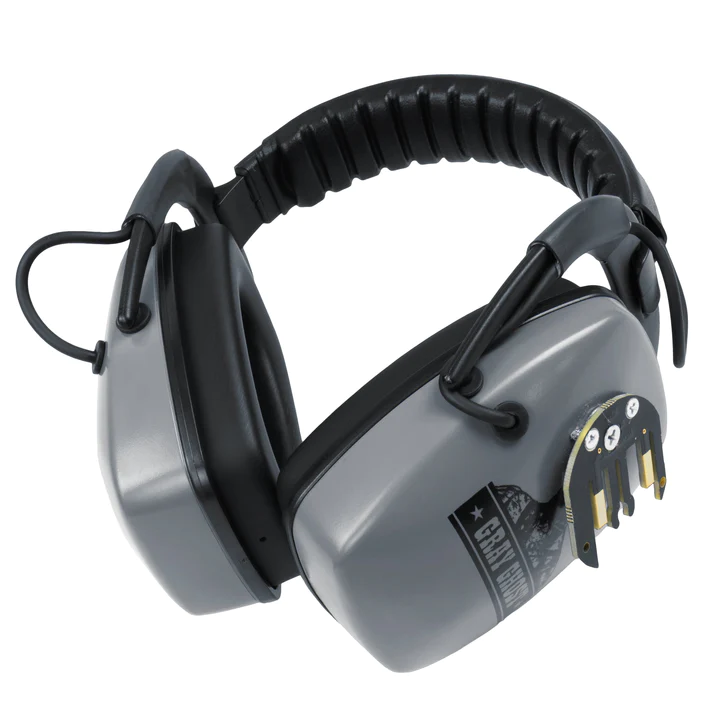-
Posts
6,103 -
Joined
-
Last visited
-
Days Won
32
Content Type
Forums
Detector Prospector Home
Detector Database
Downloads
Everything posted by Chase Goldman
-

Wm 09 Wireless Audio Module For Manticore
Chase Goldman replied to abenson's topic in Minelab Manticore Forum
Well, I did mention that as an option in what you quoted but "better" than what option and in what respect: price, performance? They're certainly the least expensive option. And while latency is not the issue, plug-in transmitters have some minor drawbacks I discuss further below. The options above aren't listed in order of any preference, btw, because it's really something everyone has to figure out for themselves. Ideally, it would be nice not to have to add additional wireless transmitter claptrap to a detector that already has a low latency wireless transmitter installed that has less latency than BT APTX-LL by spec. But ML locked it down to only be compatible with their overpriced accessories and while the supplied headphones work fine for the most part, some have complained about their audio frequency response and wind noise, while others complain about lack of situational awareness while wearing them. They are also NOT waterproof or even weatherproof. So here we are. ML offers up the expensive WM09. BTW I personally have no issues with using either self-contained wireless phones or plugging into a wireless receiver that I can simply tuck away. As long as I'm untethered from the detector, I'm happy. One benefit with the tuck away receiver is that you can conceal it from the elements and protect it from weather. If your wireless phones are not weatherproof (most aren't) you may be out of luck unless you are wearing a rain hood. Regarding APTX-LL transmitters plugged into the headphone jack on the detector, as I said, latency is not the issue but there are minor drawbacks. Unless you have small, rigid transmitter with an integrated plug, you have to figure out how mount it without having it flop around, it's another thing you have to charge, and, finally, I have not seen any weatherproof transmitters so if you get caught in the rain you may be out of luck or have to improvise a way to keep it from getting wet. Like I said, these are all minor things but wort mentioning when considering different wireless options. -

Wm 09 Wireless Audio Module For Manticore
Chase Goldman replied to abenson's topic in Minelab Manticore Forum
Yep. We've just been waiting for them to release the inevitable ridiculous price point. Thanks for reminding me about it, Andrew. Doing some web diving I found this: From this website it looks like $229US MAP. Ugh. I've also seen $249AUS. Won't know for sure until more dealers start to advertise for pre-orders and no release date so far. If that's a real MAP, not surprised based off the WM08 price, but it's $200 more than it should be. At that price, if I needed an alternative to the ML proprietary phones, I'd just convert the ear cup on the Minelab wireless phones that contains the wireless receiver electronics and headphone jack into a WM09 home brew hack. You can even buy a second pair of ML wireless phones to hack for less than the WM09. (I've seen the ML85's advertised for as low as $114). Or go with the APTX-LL transmitter plugged into the M-core headphone port as many have done and APTX-LL phones or an APTX-LL receiver that can accept wired phones. These transmitter/receivers run about $30 each. Or you can go with Quest or Garrett wireless systems. Bottom line there may be a lot of less expensive options than thw WM09 to untether while using 3rd party phones. We'll see where ML ends up on the price point. -

Avantree Interested In Hearing From You
Chase Goldman replied to Wiggins's topic in Detector Prospector Forum
A weatherproof version of the Torus (or over ear phones or neckband anchored earbuds) would be great. Also, I have proprietary wireless metal detecting equipment that is not necessarily easy to plug a transmitter into the headphone jack because it is a waterproof, multi-pin connector. So having a Torus or nechband phones with an aux input jack would be welcome.- 78 replies
-
- minelab gpz 7000
- headphones and audio
-
(and 1 more)
Tagged with:
-

Just Picked Up The Full Deus2 Control Box.
Chase Goldman replied to George Kinsey's topic in XP Deus II Forum
Congrats. It's a little more flexible in terms of being able to manage multiple custom variants of your favorite base factory programs. And the X-Y graphical display is interesting. Performance is unaffected either way. -

A Look Back At 2023
Chase Goldman replied to Chase Goldman's topic in Metal Detecting For Coins & Relics
I like that - good one VL! -

Is It Just My Impression? Coil Impact
Chase Goldman replied to raziel900's topic in XP Deus II Forum
The final back and forth really didn't really help shed any additional light on the OP's question. There are undoubtedly changes that are not necessarily being documented, but debating the nature and extent of those known unknowns is non-productive. It should be sufficient for people to simply relate their experiences post update and not unreasonable to connect new behavior to the update. Conversely, its completely valid for someone else to state they are not seeing that behavior cited and to personally conclude nothing has changed. If there is no objective evidence (video, test data) presented then debating those different experiences is non-productive. Let's move on. -

A Look Back At 2023
Chase Goldman replied to Chase Goldman's topic in Metal Detecting For Coins & Relics
Ha ha. Not yet. May do some beach detecting if we get major erosion from a winter Nor'easter. We have one coming this weekend. Otherwise, that will have to wait until April/May. It's all ready to go! -

When Your Wife Tells You To Go Detecting, Just Go!
Chase Goldman replied to CPT_GhostLight's topic in XP Deus II Forum
Correct, it also says 1/10 oz on the coin which helps avoid having to do the math, too. Not being good at math, I cheated and that's how I came up with 0.1 oz in my previous post. That would be great, but it looks from the photos to be gold plated brass or some other low value base metal. Also, the 87 TID might indicate copper or brass base, as well. Let's see what CPT comes up with. Nevertheless, gold coin pendant is a great find. -

When Your Wife Tells You To Go Detecting, Just Go!
Chase Goldman replied to CPT_GhostLight's topic in XP Deus II Forum
Fantastic CPT. It's fun to be surprised even after the hunt is over, and gold to boot. Congrats! Those Chinese Panda Gold Bullion Coins are popular for gold investment and as jewelry pieces like yours. Even though its chewed up, the spot melt price is just over $200 today for that 0.1 oz coin. So great start to 2024. -
I retired from the rat race in 2023 which naturally opened up a lot more time for metal detecting. I didn't know what to expect for 2023, but I did figure that I would at least get more opportunities to detect which hopefully would translate into more quality finds than in previous years. It turns out that was case, but what really made 2023 enjoyable was not just the finds but the opportunity to try out different things and to hang out more with my detectorist buddies. Especially partnering up with Bob (@F350Platinum) who is just constantly pillaging the Northern Neck of Virginia with new finds and permissions. I was fortunate to meet Bob 3 years ago after he started posting his yard finds on the forum. He was really just starting out and while I knew he was aware of the history behind his amazing finds, I am not sure he realized at the time just what a detecting paradise he had at his doorstep. I know a lot of folks who would consider just about everything he found on his first few hunts as bucket listers because they would not have ready access to detect such historic relic laden areas. As a Northern Virginian city dweller I had little to offer in terms of reciprocation in terms of permissions and sites but I did know detectors and how to detect relics and met up with him to detect and share my knowledge of detectors, history, and relic hunting. The mentor soon became the mentee as Bob's opportunity to frequently detect, his rapport with the local landowners, and his research and IT skills soon lapped my abilities and now I am just thankful we became friends and he let's me tag along with him at his permissions. Anyway, with that backstory out of the way, on to early 2023. We started out hitting some of Bob's sites that he has had access to for a couple of years. Happily pulling out whatever we hadn't already found or that were turned up in the plowed fields. And as per usual, we ran into one of the landowner farmers who were out and about on their properties. An offhanded comment to that landowner and low and behold Bob made another connection and a potential permission to a farm we had been eyeing for some time. Off to a new permission and all the excitement that comes with it. We've posted our finds on these sites before so not going to bore you all with that, suffice to say, I found some bucket listers and finds that I have never before recovered including a pipe tamper, a brass men's ring stamped 18K, and a North Carolina CW button and the largest spectacle buckle I have dug (though only partial). Bob snagged A LOT of silver coins from the "front yard" of the home site. It was supposedly pounded previously, but the site was challenging with lots of iron and other junk and we felt that in this case, the latest D2 detector technology (fast recovery, multifrequency) provided an advantage vs. those who had gone years before us, probably with slower or less discriminating machines. We were rewarded and had a great time visiting that site throughout the year and anticipated Fall harvest to access fields that were unavailable to us at that time. Bob and I attended a group hunt we both attended the prior year that was fun and productive. This year, not so much. Bob managed a CW Eagle button and, I managed...nothing. I was focusing on learning my new Axiom PI detector and also testing out a new smaller coil. I could have exploited some previous minie ball hot spots, but decided to not limit myself and we explored a large portion of the farm. It happens and the Axiom proved itself later at a bigger group hunt in hot soil. That was Diggin' in Virginia (DIV) at a new site that was the location of a running artillery and infantry battle of the Civil War called the Battle of Freemans Ford which was a tactical water crossing of the Rappahannock River. Union Artillery and Infantry units engaged a Confederate supply column that was being protected by a number of Confederate regiments. The Union units were routed back across the river but the Confederates took a lot of shelling from the Union batteries on the high ground across the river. A ton of artillery shell fragments, fuses, sabot, and unexploded ordanance were recovered as well as other typical CW relic items such as plates, buttons, minie balls, etc. Since the site was adjacent to the river, it also contained a number of old Colonial, 19th and 20th century former home sites. I recovered a number of shell fragments, sabot, a fuse, and small arms projectiles with my new Axiom, but one non-CW-period find was my favorite. A 1923 SLQ in excellent condition. Probably dropped exactly 100 years prior. The Axiom proved itself that day and my GPX found a new home with another detectorist. Over the summer, during the traditional relic detecting hiatus (the fields are planted, the bugs are out, and the sun is high), I did some beach detecting on the Chesapeake Bay and also met up with Bob a couple of times at his local "beach" haunt at Colonial Beach VA. Found some bling and a lot of quarters and yet another beached Sacagawea dollar coin (weird) and generally had a great time soaking up some rays and talking to the local beachgoers. Sometimes getting some more leads to permissions in the general area. When fall finally came around, we some of our old haunts. Didn't expect too much because the sites had either been minimally productive or we had pounded them to death. In that context of low expectations I had one of my best days ever. Three 1930's silver quarters and an Bob snagged an eagle button, but nothing else out of a traditionally stingy field so we moved on after a couple of hours. The next field we had pounded multiple times but hit the known hot spot areas. We weren't getting much other than lead bale seals until we hit a known iron patch where we started pulling out various old flat and ball buttons and other pieces of brass. I then finally pulled an unfamiliar two-piece button with an anchor on it. I knew it was some sort of Navy button or possibly even a civilian decorative button until I did the research and found it to be a British Naval Officer's button from the late 1700's to early 1800's. In context, it makes sense. The area was raided by the British during the war of 1812 and also there may have been colonists who were former British Naval Officers who lived there. Anyway, for me this is a bucket lister in the sense that it is potentially linked to British military action in the area during the war of 1812. I also got to detect some sites up north in central Virginia, Pennsylvania and Maryland and scored some silver, copper, brass, lead, and pewter Colonial spoon bowl. Bob got some additional intel regarding one of our sites about a potentially unexploited former home site. It was in a field in which we did not have previous access due to crops. When the crops were finally harvested, Bob let me know, we met up and we "attacked" the area and were successful in finding the site. We hit that area twice and it was very productive. Bob got a 1798 Largie (a bucket lister for me is recovering ANY pre-1800 minted US coin, silver or gold would be a bonus). I was very jealous of that because even though I was seemingly pulling relics from the ground at will, I could not get my coil over any coin. Regardless, it was a great couple of outings and stood out to me because of the sheer number of relics but also because, even though I was not able to snag a coin, I was able to snag silver in the form of a very old, patterned cufflink. We capped off the year with a hunt at an initially promising new site that coughed up a number of colonial buttons, some oddities (including an unexpected Eagle GS button), and we each somehow managed to snag Merc's in the same area to finish off the hunt with some silver, which is always nice. My final hunt of the year turned out to be the capper for me, and hopefully, a sign of good things to come for 2024. It was an especially good year for silver for me. At least 4 silver quarters, a number of silver dimes, a silver 1840 Seated Liberty half dime (my first), and the silver cufflink. We hit a field that had iron but had only given up a few keepers. I noted to Bob that I was not ready to give up on it, though we both had low expectations based on our previous visit there. Bob and I started to hit areas that we had not detected previously and hit the iron patches hard. A few brass relics started to pop and then I hit a solid 91 that did not waver even after I did a 360 turn. I thought to myself, well at least I am going to dig a silver or clad dime. I flipped the plug, pinpointed and flipped out some more dirt and silver DID pop out of the hole, but not what I thought it was going to be. I thought, wow its a quarter or half, by sight, but that didn't jive with 91 TID. I looked closer at the coin design details and realized that I just popped my first 2 Reale Spanish silver - 1793 King Charles IV (stamped as Carolus IIII on the coin) with a Lima, Peru mintmark. If that coin could talk and tell the tale of how it ended up in a Virginia farm field, I would have loved to hear it. Called over to Bob, and even though it was only 10am, told him my hunt was over and I was going home because I knew I couldn't top it for the year, much less for the rest of the day. I might have dinged it with my digger, but in my defense, I thought I was recovering a dime. It happens. I stuck around though, for the rest of the day, and we pulled some more brass and then called it a year! In 2024, my quest for my ideal VLF IB detector has pretty much ended with the Deus 2. I still dabble with other machines but if I am serious about the dig, it's going to be the Deus 2. ALL my quality finds this year were recovered with the Deus 2 or the Axiom. Thanks to Bob for some great detecting adventures and friendship! Goodbye 2023, had fun. Hello 2024, can't wait! Wishing everyone great digging in 2024.
- 15 replies
-
- 29
-

-

-
It's not proportional. The sensitivity to depth relationship is non-linear. It plateaus (i.e., the steepness of the curve significantly decreases) at sensitivity levels above 22 or so in my experience.
-

Last Hunt Of The Season #4
Chase Goldman replied to F350Platinum's topic in Metal Detecting For Coins & Relics
Bob - The ring, lock, and that dome button were all individually visually interesting and great finds in their own right because they each infer an interesting story in our imagination of how they came to be where you found them. All I can say is thank you for the hunt today a great wrap to the year and when I get a chance I’ll provide a recap on the great time I had not only today but this Fall and past Spring hunting Virginia’s Northern Neck with you and some of my other 2023 mid-Atlantic state detecting adventures. Looking forward to more adventures with you in 2024. -

New To Detectors; Need A Short Term Mentor
Chase Goldman replied to SoonRetired's topic in XP Deus II Forum
Welcome to the forum SR. Sent you a PM. But might be helpful for you and others lurking to publically share with the forum some background information so we can give you the best recommendations and advice. First what general region of the country are you going to detect in? This helps us better understand your detecting environment. (Inland, beach, mild or mineralized soil, lawns, fields, farms or woods, etc.) Certain detectors do better than others in different environments. Second, it would be helpful to better understand what specific type of detecting you are most interested in as the various “types” of hunting require different approaches, detectors, and recovery tools. For example, are you interested in park hunting for coins and jewely, hunting private property (residences or farms with permission) for coins, jewelry, or historic relics, salt or freshwater beach hunting, or hunting for gold/meteorites? Finally, related to the above, it would be good to know why you have already narrowed down your detector choice to the Deus II and eliminated others from consideration. The Deus II is an excellent and versatile multipurpose detector with great ergonomics. But it is also an advanced detector with a learning curve and a significant investment. Just want to make sure you’ve set realistic expectations on how this is all going to go down. Have you accompanied others on detecting outings firsthand or know of a local detecting club or have you only been exposed to you tube and TV detecting which edits out the hours of futile swinging and pouches full of trash you will inevitably encounter? And that’s if you’ve been fortunate enough to have detectable public sites or have been personally granted permissions or invites to desirable private sites and have done the research to know where it’s both promising and legal to detect. Not trying to be a Debbie Downer, just keeping it real. Metal Detecting Enthusiasts are all subjected to these downsides and challenges, regardless of skill or experience but are hooked nevertheless by that one great find of the day and the promise of the next one to come. Welcome to the obsession and standing by to help you dive in. -

Eqx 900 & Legend Separation
Chase Goldman replied to HardPack's topic in Metal Detector Advice & Comparisons
Bingo. FWIW - With the 900, I would personally up recovery speed from 4 and set the iron bias to max and back off on sensitivity to 20 or less to minimize falsing as much as possible in thick iron and see if you could cherry pick at least some shallow non-ferrous out of the iron muck recognizing you are just going to lose depth on deep non-ferrous regardless. I mean in thick iron, depth is pretty much out the window due to falsing, masking, and target ID down averaging, so one of the first things I do in a thick iron patch after upping recovery speed is lowering sensitivity, the filters never really do much. I know your test garden is showing you some potentially “optimal” settings but your test garden can’t really replicate all the myriad of real world 3-Dimensional ferrous to non-ferrous target spatial orientations, soil moisture conditions, and old target halo effects that can result in masking and falsing at your tough mining site. The Deus might be a better tool in the thick stuff as well. I would tweak Silencer up or use Goldfield with mild IAR unless the soil is very mineralized (in which case I would set IAR to 0) and again lower sensitivity to focus on unmasking shallow non-ferrous. None of the iron filter features on the peer detectors mentioned (Manticore, Legend) or Deus II are really going to work any miracles in your situation over and above your Deus and Nox 900. If neither detector is pulling non- ferrous out of the iron patches with these tweaks, it might be time to start the tedious process of scraping and removing iron. Good luck in any event. -

My First Experience With XP Repair Service
Chase Goldman replied to F350Platinum's topic in XP Deus II Forum
Yep. Thanks again for posting. You mentioned a very important point earlier as well, specifically, communication. I don’t think many of these repair centers realize the importance of comms and how much value there is in simply keeping the customer electronically informed of status. In this case, lack of a heads up email or text stating the repair was complete and shipped out with a tracking number and notification regarding requiring a receipt signature delayed receipt of the repaired unit at least an additional day because Bob had no clue it was arriving and was not available to sign for it or to leave alternate delivery instructions with the carrier. Something else others dealing with XP repair need to be aware of. -

My First Experience With XP Repair Service
Chase Goldman replied to F350Platinum's topic in XP Deus II Forum
Yes, not egregious but it definitely would have been nice if they did it all at once while the unit was already opened for the connector repair, because you do want to minimize disassembly on watertight cases. Not sure if you mentioned the fact that the port cover was worn in the warranty repair request form (even though it may have been visually obvious), but for those who might be in a similar situation, never hurts to explicitly mention such things so as to not leave them solely up to the discretion of the repair technician and let them also tell you explicitly whether or not it's covered by warranty. That way you up your chances of getting a freebie proactive replacement or can decide whether you want to pay for the non-covered repair while the unit is already in the shop. After many such electronics warranty repair experiences (primarily phones), I have learned to be annoyingly explicit in my repair expectations with these repair outlets, especially warranty repair where they are motivated to do only the absolute minimum necessary to satisfy the conditions of warranty. I know the remote is definitely going to outlast that plastic port cover as you have to unscrew it EVERY time you charge the unit as well as when you plug in wired phones. It's also easy to cross-thread which shaves a little more plastic off each time. It's all very annoying but I guess it comes with the territory on these watertight/dust tight IP compliant electronics. Nokta went with a metallic screw-in port cover and wire retaining lanyard on the Legend's control pod headphone/charging/data port. That might have been a better design move in this case, though it also can subject the connector threads to wear. No perfect solutions, I guess. -

My First Experience With XP Repair Service
Chase Goldman replied to F350Platinum's topic in XP Deus II Forum
Bob, First of all, thanks for the warranty repair report. It's good to do these for the benefit of everyone else who might have to eventually follow down this path so folks know the process and policy details regarding send/return shipping costs which vary across the board and how long to expect to be without their gear, etc. Encourage everyone to post their experiences in this regard. Couple of thoughts from the peanut gallery...different perspective. Maybe they will help allay some of your post repair concerns or not but thought I would share with the forum anyway. AFAICT - the port cover is not there for watertight integrity but simply to keep dust, debris and salt residue out of the connector (which I would recommend flushing with fresh water after a salt water hunt). So it's good to have but not essential. If it actually wears out, I probably wouldn't bother replacing it or might just get a replacement port cover and not bother with disassembly to attach the lanyard. You could also see if they would replace it under warranty if it can no longer perform its intended function but the cost to send it in and insure it, etc is probably not worth it. It's most likely considered a normal wear and tear item which is not covered under warranty anyway and might explain why they did not touch it during your repair, unfortunately. Would have been a nice touch if they replaced it. If they screwed up the watertight integrity of the remote due to the repair, they would still be liable for warranty repair if the remote is subsequently damaged due to water intrusion. As a result, I would think that they would be motivated to do the repair properly and restore it to IP68 compliance. I'd personally want to know that sooner than later and would use the older remote for water use rather than subjecting my new remote to water hunting abuse, in any event. Anyway, glad you got it back mostly fixed and have the peace of mind that comes with having a backup. HTH -
Since we are talking about a DD, this really has little to do with separation other than if there are multiple targets under a coils footprint, you may get some edge interference from targets that are detected at the edge of a coil and the smaller the footprint, the less chance of that happening in areas where you have high target density. There are advantages to DD elliptical coils in general and small ellipticals in particular versus round coils. The narrow width allows more side to side swing room when in tight swing situations such as brush or cornstalks as mentioned several times previously the longer length provides for more swing coverage that a round coil with a diameter the same width as the elliptical. For example, a 10x5 affords more side-to-side swing ability than a 10-inch round coil when there is less than 10 inches of swing room. It also provides the SAME amount of swing coverage as the 10-inch round, and if you use Geotech's rules of thumb for detection depth vs. coil size, a 5x10 elliptical has about the same depth performance as a round coil of approximately 6.3 inches in diameter. In the linked Geotech post there is a chart that shows the optimal target depth for a coil at 10 inches diameter is about 5 inches (not maximum detection depth) and for a 6.3 inch coil it is about 4.75 inches. In fact, Geotech's post which references some insights by Eric Foster discusses the pros and cons of small and large coils beyond just depth and might be a useful read for those who are interested this Deus II coil discussion.
-
Glad your are enjoying your new Deus 2. The beauty of the Deus/Deus 2 modular platform is that there are a LOT of configuration options - a lot more than just one or two aftermarket headphone choices. You can go with your current full up remote and wireless WS6 puck/backphone configuration or you can opt for several different options with the WS6 Puck as alternatives to the backphones: You can get a wired headphone adapter plate (about $20) that slides onto the WS6 puck and then plug your favorite wired phones (you can use your existing Legend wireless headphones in wired mode using the included wired connector) plugged into the puck to run untethered from the detector by just slipping the puck into a pocket or you can get any of several puck mounts/holders that enable you to strap the puck on your wrist or strap it to your belt or a shoulder strap or mount just the puck on your Deus stem and shaft. You can even plug a Bluetooth APTX-LL transmitter into your puck adapter and use your Legend wireless phones. Although the collective audio lag may not be ideal. You can also get full size third party headphones with a puck mount. Or get either of two WSA II wireless phones (WSA II Puck or WSA II XL full size over the ear phones) that lack standalone control features of the WS6 Puck. Since you are not an XP backphone fan, then WSA II XLs would be preferred, except that they cost about $170 - $200US. Here are some pics and links to alternatives to the backphones: WSA II XL: https://a.co/d/6bf2I7m WSA II https://a.co/d/g1qqqds Wired headphone adapter plate for WS6 or WSA II puck Puck stem adaptor mount. Both of the above are included in a single kit for about $19US at https://a.co/d/9xsAiiC Puck wrist mount https://a.co/d/1Oe2EbZ Detecting Doodads puck mount over the ear phones. I like these. They are weatherproof, have mute switch, and an audio input jack so you can use them with other detectors. https://www.detectingdoodads.com/store/p43/Over_the_ear_Treasure_Phones.html Quest XP Deus Compatible Puck Mount Phones https://seriousdetecting.com/products/hd-compatible-wireless-headphones-for-xp-deus-deus-ii-module?variant=45212256010524&srsltid=AfmBOorsywD1059wrPQ_-_7WfvgCLgS4lnmtc7LmL-9LBm1gxoEUd9mUeg0 Gray Ghost XP Deus Compatible Puck Mount Phones https://highplainsprospectors.com/products/detector-pro-gray-ghost-xp-platinum-series-wireless-headphones-for-xp-deus-xp-deus-ii?srsltid=AfmBOor65mL4mY2_exO_S8i556lbUA_b8fEcftHTFg4RIdoKmjKGnoF0ddY Hope this helps give you some options to consider as alternatives to the backphones you can spend as little as $20 or as much as $200 or more to address your issues with the backphones.
-
I'm surprised he hasn't turned one up yet as he's hit just about all my other bucket listers, so yeah, maybe next year. Just glad Bob lets me bottom feed off his permissions. It's been a good Fall/Winter relic season so far for both of us. I'm doing good on total quality finds, but can't get my coil over the old coppers like Bob can. Of course I have to drive two hours to pillage Bob's front yard and other Northern Neck permissions vs. his daily access. Despite that I'm holding my own and enjoy Bob's company, coffee, and permission access generosity. It's been a fun 2023, Bob, thanks and looking forward to a some more visits in 2024. Congrats on the Colonial Copper, Merry Christmas, and Happy New Year!
-

Simplex & Legend Headphone Compatibility?
Chase Goldman replied to CalReg's topic in Nokta / Makro Metal Detectors
The Original Simplex and the Legend use different wireless headphone protocols so the Simplex wireless headphones cannot be used with the Legend. -

Last Hunt Of 2023, Not Bad
Chase Goldman replied to F350Platinum's topic in Metal Detecting For Coins & Relics
Kids gotta party somewhere, hunters use farm fields to access the woods, and some farmers like to partake in the field, too. So if you are in a farm field or next to any kind of well travelled road, there is going to be scattered aluminum, and aluminum especially concentrated on the edges. -
They might connect, but if the headphones don’t support APTX-LL then there will be a significant delay as they will probably connect using the SBC code which is pretty laggy. Legend doesn’t support the low latency LC3 codec used by the latest Bluetooth LE wireless devices only APTX-LL for low latency wireless detector audio. Bluetooth LE is an industry standard and the LC3 codec is the latest and greatest low latency codec utilized by BT LE. But manufacturers can choose whether or not to make their BT LE devices compatible with third parties. Minelab has intentionally chosen not have their Bluetooth LE audio devices connect with 3rd party devices, so even though 3rd party Bluetooth LE devices with the LC3 codec are starting to appear on the marketplace, none of them will be compatible with the ML detector Bluetooth LE transmitters.
-
Thanks for the additional information, Lodge. FWIW - That bin at zero would knock out a lot of the flat and two-piece buttons we recover at our Colonial sites that fall in the 73 - 78 range. A lot of aluminum there too, though. No easy day.



